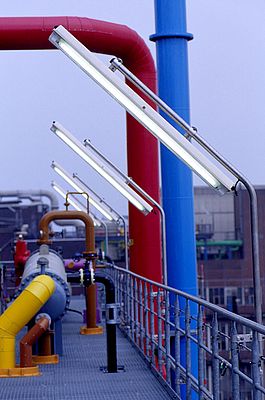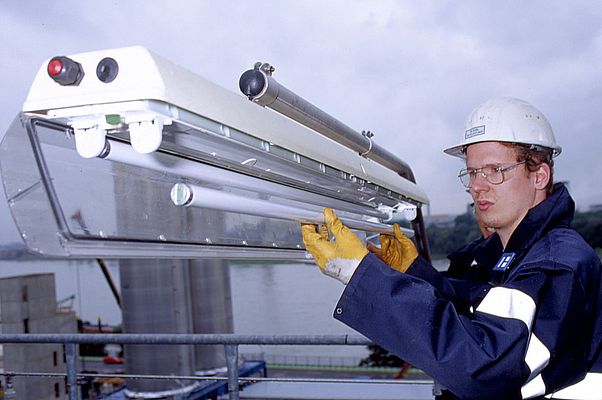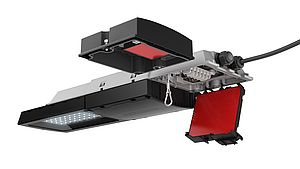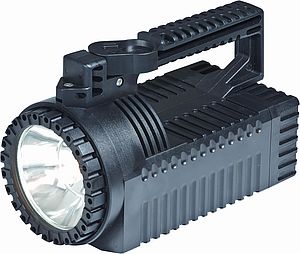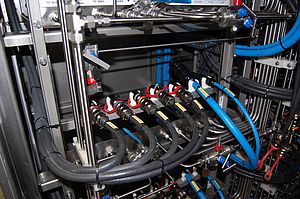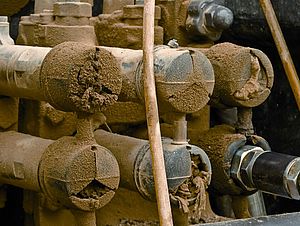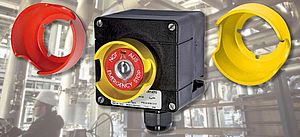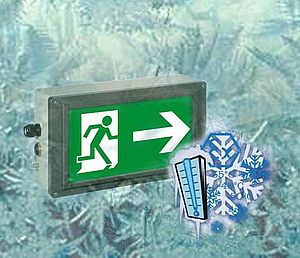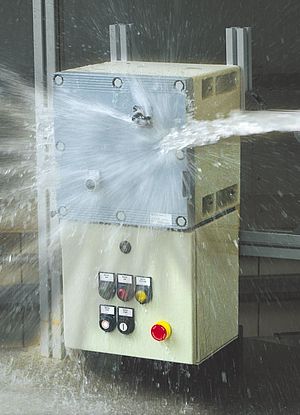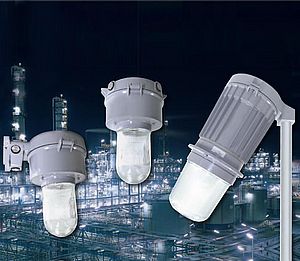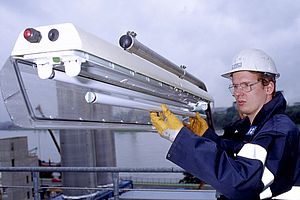An explosion-proof fluorescent light fitting has been engineered for the Chevron-operated Gorgon project. The unique requirements for this project included ensuring that the lighting solution minimised disturbance of the local sea turtle population, whilst satisfying the Health & Safety requirements.
More than 20,000 explosion-proof (Ex Zone 1 and Zone 2) fluorescent light fittings will be supplied for installation on the Liquefied Natural Gas (LNG) and domestic gas plant under construction as part of the Gorgon Project – one of the world’s largest natural gas projects.
Not only do the light fittings have to meet strict Health & Safety requirements in terms of explosion-protection and ensuring that plant personnel can still distinguish the colour of safety and warning signs at the gas plant, they also have to ensure that disturbance of the local population of sea turtles caused by artificial light sources is minimised. These unique, dual requirements posed enormous engineering challenges for the lighting supplier.
The project involves the phased construction of three, 5 million tonnes per annum (MTPA) Liquefied Natural Gas (LNG) plants on Barrow Island, as well as a domestic gas plant with the capacity to provide 300 terajoules per day to supply gas to Western Australia. Gorgon LNG will be offloaded via a 4km long jetty for transport to global markets. The domestic gas will be piped to the Western Australian mainland.
The complexity and sheer scale of Gorgon is unprecedented. The gas field being tapped into contains around 40 trillion cubic feet of LNG. The project is a long term, technically complex energy development that signifies a dramatic advancement in engineering.
The local turtle population
At Barrow Island, Gorgon occupies around 1.3 per cent of the island’s un-cleared landmass. The island is a Class A Nature Reserve. The island is an important nesting area for sea turtles. For more than 40 years, it has been home to an active oil field and turtle rookery. Sea turtles nest on the island’s beaches between October and March each year. Ongoing conservation efforts are reflected in the stringent environmental conditions set by the State and Australian Governments as part of the Gorgon Project approval process.
One of the requirements of the Gorgon Project is that plant lighting’s disturbance of local turtle populations should be minimised. In other words, any artificial light must not disturb turtle hatchling’s orientation towards the sea. As Graham Doran, Director Europe Global Projects Group at COOPER Crouse-Hinds puts it: “Having to ensure that our lighting solution meets the needs of different groups involved in the Gorgon Project – Environmental, Health & Safety, and Engineering – is a real challenge. One group of people wants a lighting solution that is as bright as possible so that plant personnel can carry out their work in safe, bright lighting conditions, whereas another group require anti-reflective lights that are as dim as possible in order to protect the sea turtles.”
Primary lighting requirements
In terms of the Gorgon processing plant, this means any lighting supplied must adhere to a strict set of requirements. In this case, the primary requirements are that the main light output is greater than 560nm in order to prevent turtles being attracted to the artificial light. The light fittings also have to be fit for use in hazardous industrial, Zone 1 and Zone 2 environments.
Another primary lighting requirement on Gorgon is that the colour-rendering index (CRI) of the lighting has to ensure safe working conditions for plant personnel. As Willi Steckel, Product Line Manager Lighting (IEC) at COOPER Crouse-Hinds GmbH, explains: “The CRI index measures how well a colour can be identified by the human eye under artificial light conditions. We had to make sure that our proposed lighting solution at 560-600nm could meet these requirements, so that plant personnel would still be able to identify the specific colours of safety escape signs and other colour-critical warning lamps.”
According to Steckel, in order to solve the CRI issue, 20 to 30 different light filters were tested on the eLLK 92 light fitting. “After we found the appropriate filters, we then tested which one would give us the best colouring with the fluorescent tube. This part of the product testing alone took 8 months to complete. Finally, once we had a good selection of matches, we commenced the UV resistance testing of each filter type,” he recalls.
“The other primary requirement was that general illumination lighting would not be directed upwards from the plant into the sky, thus creating a halo effect around the plant, which would distract the sea turtles,” he adds. “We therefore developed different shielding arrangements depending on the mounting angle of the light fitting. Normally, a light fitting faces downwards but there are situations on a plant where a light may need to be mounted sideways and so for these units, we had to ensure that the light was supplied with the correct shielding for that particular mounting position.”
Secondary lighting requirements
There were also a number of secondary requirements for the lighting. The solution had to use proven technology; provide an optimised light output and optimised turtle orientation response factor; provide maximum time between inspection intervals and use future-compatible technology.
As Graham Doran states: “Our eLLK 92 light fitting is a reliable product, manufactured to superior quality levels and with an excellent reputation for long life and minimal maintenance in hazardous oil & gas installations.”
Minimal maintenance costs
To make use of the proven long life of the light fitting components, long life tubes were selected, which offers 60,000 hours between inspection intervals. This ensures minimal servicing and maintenance costs for the plant operator.
The lighting units had to meet certain wind speed requirements in case of unexpected cyclones (gale force winds) were encountered on Barrow Island. This meant that the
eLLK 92 had to be tested in the laboratory at wind speeds of up to 320km/h, in order to simulate a potential cyclone. “The eLLK 92 passed these tests with flying colours,” says Steckel.
The recommended solution
After more than 2 years of testing and development, COOPER Crouse-Hinds recommended its standard eLLK 92 Ex fluorescent light fittings for Zone 1 and Zone 2 areas, but fitted with a special cover and light filter. The light source is a T8 long life fluorescent white tube with light colour 830.
The light fittings use approved EVG09 ballast, housing and lamps, and are certified to the following standards: BVS 09 ATEX E 034; II 2G Ex de IIC T4. Recommended lamp change interval is 6 years, with a recommended cover change interval of 12 years.
“In my 40 years of working for this company, I cannot remember a project like this one in terms of the complexity of the primary and secondary lighting requirements. The engineering challenges that we’ve had to overcome on this project required all engineering and technical disciplines within COOPER Crouse-Hinds: R&D, testing, electronics, mechanical, and so on. It was a real collaborative effort here. Everyone here that is involved in the project has been completely driven and motivated to meet these unique challenges and project requirements,” concludes Steckel.
Sea turtle friendly Ex-lighting
for gas plant
- by Cooper Crouse-Hinds GmbH
- November 15, 2011
- 756 views


